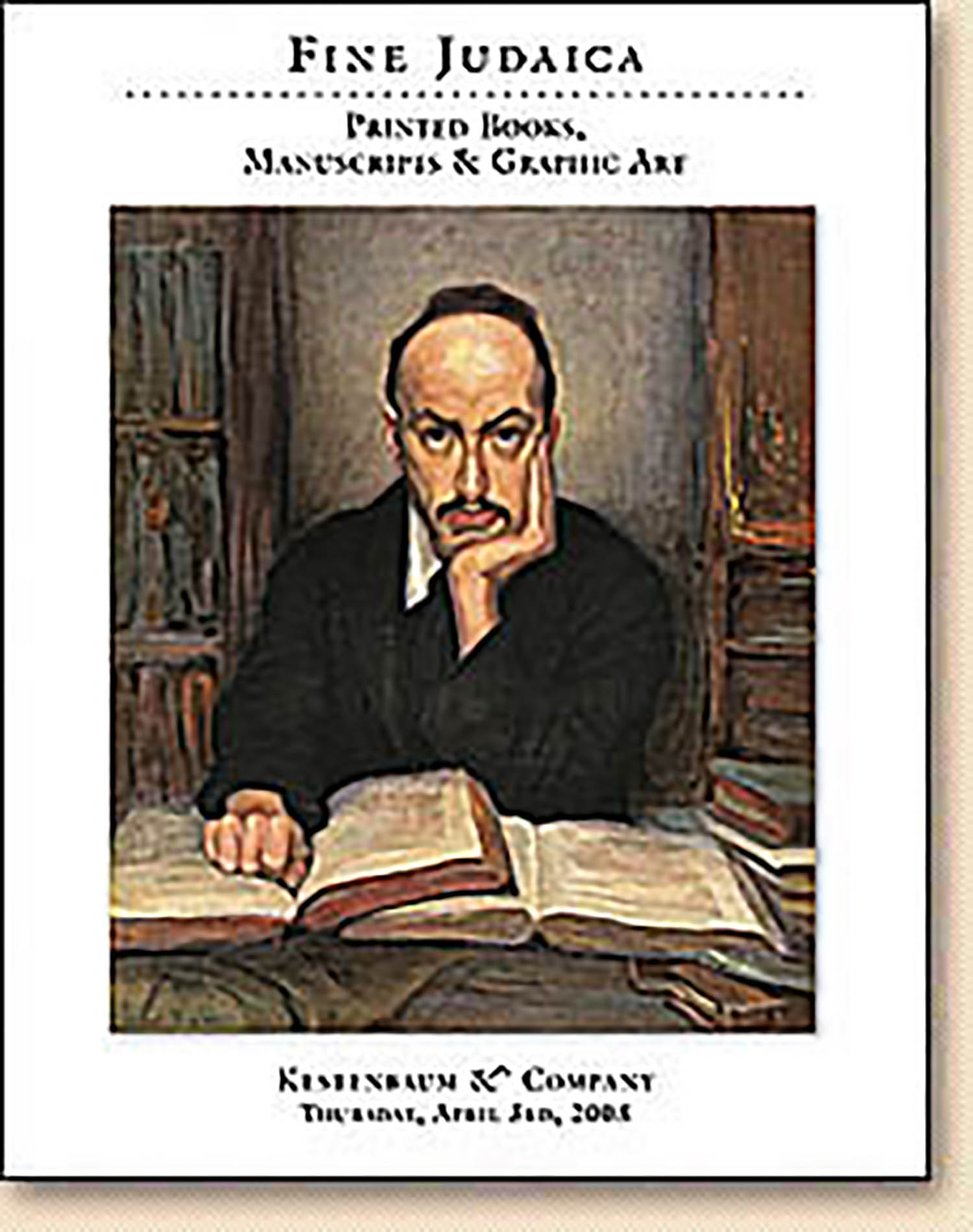MIDRASH TEHILIM.

AUCTION 39 |
Thursday, April 03rd,
2008 at 1:00
Fine Judaica: Printed Books, Manuscripts, Autograph Letters & Graphic Art
Lot 229
MIDRASH TEHILIM.
Est: $15,000 - $20,000
PRICE REALIZED $16,000
MIDRASH TEHILLIM, COMPLETE WITH ALL PARTS. EXCEPTIONALLY RARE.
The Midrash Tehilim, also known as Midrash Shocher-Tov due to its opening verse, is one of the most beautiful in Midrashic literature. Its' exalted language covers many variegated themes and contains colorful stories and parables.
The first part of this work published in Constantinople in 1512, entitled "Midrash Tilim" (without the letter "Hei") concludes at Psalm 118. The Midrash from Psalm 119 to the end of the Book was published with a different typeface approximately three years later. There is much discussion among bibliographers as to precisely where: According to Steinschneider in Salonika, however Yudlov expresses doubt and writes that the fonts resemble those utlized by Eliezer Toledano in his printing of the Sepher Abudraham in the town of Fez, Morocco in 1517.
Scholars (Zunz, Buber, Albeck, Mann and others) differ as to the date of the Midrashic work's actual composition. According to Buber, the style, language and sources of the First Part (on Psalms 1-118) indicate an ancient Palestinian origin. Buber located six manuscripts of the text all of which conclude with Psalm 118, as in the present first printed edition. The Second Part was evidently published from different manuscripts and is of a much later origin. Zunz conjectured that the Second Part (on Psalms 119-150) was most likely composed towards the end of the 10th-century, probably in Southern Italy. According to Mann, however, "(the) theory of attributing several Midrashim to Italy is now antiquated and has to be discarded." (See JQR, Vol. XIV,1939: "Some Midrashic Genizah Fragments" p. 305). Indeed the Genizah fragments uncovered by Mann clearly demonstrate that Midrashic portions considered by Buber to be of late compilation are not so. Others conclude that this Midrash is a composite of a number of groups of Midrashim dating from the 3rd all the way to the 13th-century.
The Second Part of Midrash Tehilim is followed by R. Mattathias HaYitzhari’s commentary to the lengthy 119th Psalm, "Peirush ha-Alpha Beta." The Author, (Spain, 14th-15th century), was descended from the Narbonne family who emigrated to Aragon after the expulsion from France in 1306. This is the only work of this Spanish philosopher to be published. See EJ, Vol.XI, cols. 1129-30.
Both parts of Midrash Tehillim were later published together in the Venice, 1546 edition. In the scholarly introduction to his critical edition published in Vilna, 1891 Buber presents a lengthy comparison between our present Constantinople edition and the late Venice edition. It should be noted that Prof. Saul Lieberman had in his posession a copy of the Venice edition with contemporary scholarly marginal notes "befitting a modern scholar of the highest caliber" and which compared the printed editions with "lost" manuscripts apparently not seen even by Buber (see Kiryat Sepher, Vol. 13, 1939, pp.105-12).
